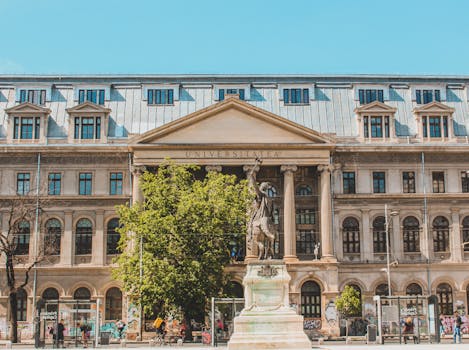
Traveling Through Time: How Europe’s Historical Heritage Shapes Modern Lifestyles in 2025
Traveling Through Time: How Europe’s Historical Heritage Shapes Modern Lifestyles in 2025. Europe, a continent steeped in history and tradition, has long been a source of fascination for travelers and history buffs alike. From the ancient ruins of Greece and Rome to the medieval castles of England and France, Europe’s historical heritage is a treasure trove of cultural and architectural riches. But how does this heritage continue to shape modern lifestyles in 2025? In this article, we’ll explore the ways in which Europe’s past informs its present, from the preservation of historical landmarks to the influence of traditional cuisine on modern cuisine.
Preserving the Past: Historical Landmarks in Modern Europe
One of the most visible ways in which Europe’s historical heritage shapes modern lifestyles is through the preservation of historical landmarks. From the Eiffel Tower in Paris to the Colosseum in Rome, these iconic structures have been meticulously restored and maintained to ensure their continued relevance and appeal. Not only do these landmarks attract millions of tourists each year, but they also serve as a reminder of Europe’s rich cultural and historical heritage. Many of these landmarks have been incorporated into modern cityscapes, with contemporary buildings and architecture designed to complement and enhance their historical significance.
The Influence of Traditional Cuisine on Modern Cuisine
Another way in which Europe’s historical heritage shapes modern lifestyles is through the influence of traditional cuisine on modern cuisine. From the rich flavors of Italian pasta dishes to the hearty stews of Irish cuisine, traditional European cuisine continues to inspire and inform modern cooking. Many modern restaurants and chefs draw on traditional recipes and ingredients, incorporating them into innovative and contemporary dishes. This blending of old and new has resulted in a vibrant and diverse culinary scene, with European cuisine remaining a major draw for foodies and travelers alike.
Modern Interpretations of Historical Arts and Crafts
Europe’s historical heritage has also had a profound influence on modern arts and crafts. From the intricate textiles of medieval Europe to the ornate furnishings of the Renaissance, traditional crafts and decorative arts continue to inspire modern designers and artisans. Many contemporary artists and craftspeople draw on historical techniques and motifs, incorporating them into innovative and contemporary works. This blending of old and new has resulted in a thriving arts and crafts scene, with European designers and artisans remaining at the forefront of modern creative expression.
Conclusion: The Enduring Legacy of Europe’s Historical Heritage
In conclusion, Europe’s historical heritage continues to shape modern lifestyles in 2025 in a multitude of ways. From the preservation of historical landmarks to the influence of traditional cuisine on modern cuisine, and from the modern interpretations of historical arts and crafts, Europe’s rich cultural and historical heritage remains a vital and enduring part of modern European identity. Whether you’re a history buff, a foodie, or simply a traveler looking to experience the best of Europe, the continent’s historical heritage is sure to leave a lasting impression.





